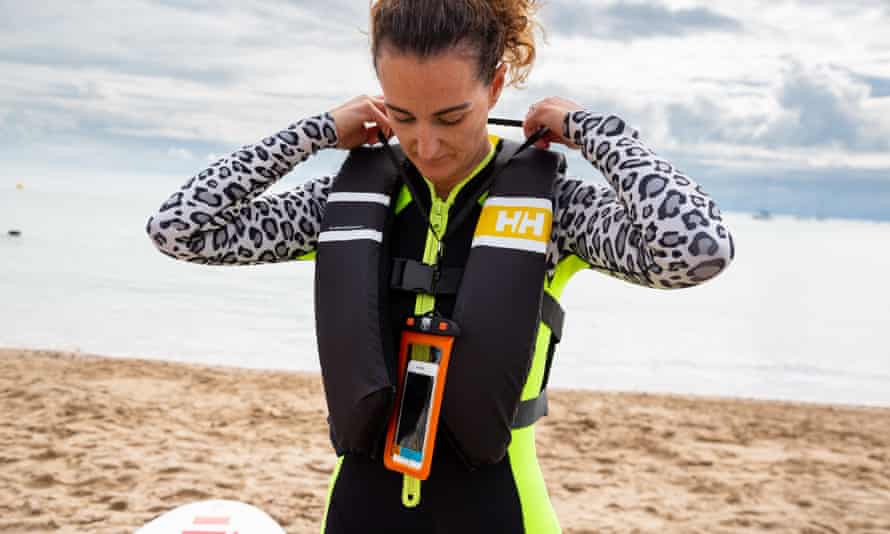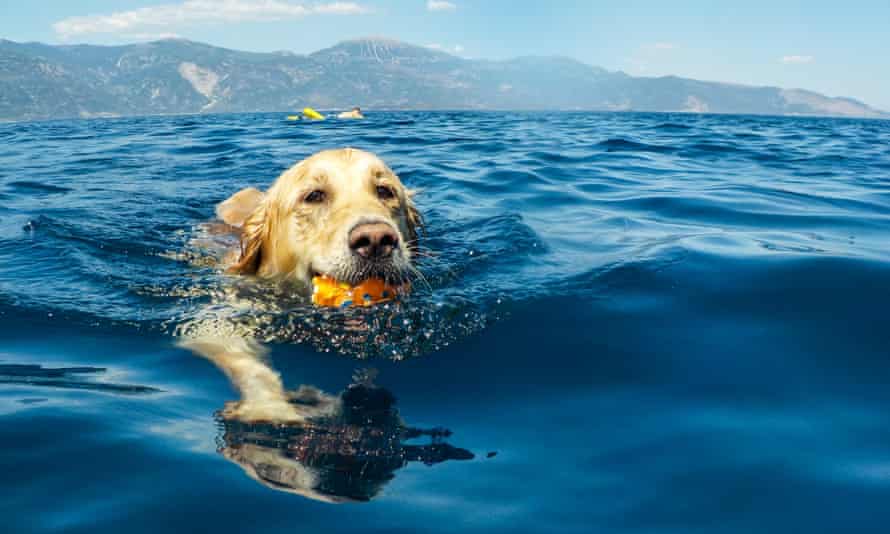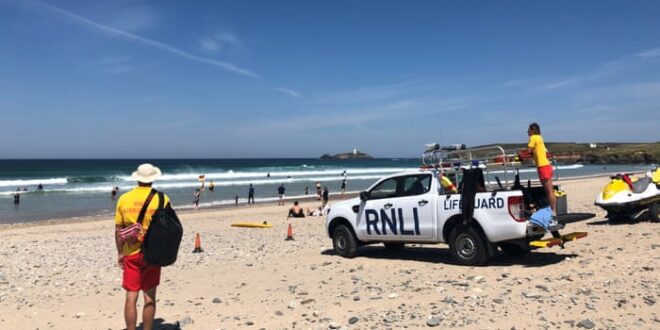Float to live
Can you float on your back in a starfish shape, chin back, chest pushed skywards? Almost everyone can. “Float to live” reduces the accelerated heart rate and panicked breathing we suffer when we find ourselves in difficulty in water, including the effects of cold water shock. Thrashing around and taking in water is a recipe for disaster, whereas floating on your back buys you vital time in which to decide whether to signal for help or try to swim ashore, says the Royal National Lifeboat Institution’s (RNLI) head of water safety, Gareth Morrison. He mentions the story of a 10-year-old boy rescued by the charity’s Scarborough Lifeboat in 2020 – he had been swept out to sea, but knew about float to live. “He floated for nearly an hour before rescuers reached him, which saved his life.”

Ditch the inflatable toys
According to Morrison, inflatable toys “are fine for a swimming pool”, but ought to be avoided on open water. “I have seen first-hand how an offshore wind can take a child who is near the shoreline on an inflatable toy, within 20 or 30 seconds, to being barely visible out to sea, requiring a lifeboat rescue,” he says. “Even an Olympic swimmer can’t beat an offshore wind.” If you see someone drifting out to sea, dial 999 and call that novelty unicorn armchair into the coastguard. Interestingly, Morrison says that the RNLI also wants people to call in empty inflatables: “They cause false alarms, so we may launch a lifeboat to retrieve them.”
Be a hero … by not trying to be a hero
It can go against our instincts not to swim out to help a person in distress in the sea, but entering the water unexpectedly to try to save someone can put you at risk of drowning. “The rescuer is often the one who ends up in the worst trouble,” says Morrison. Instead, call 999 and ask for the coastguard. “You can also try to throw the person something that floats, whether it’s a lifebuoy such as a ring, or even just a ball,” he says. “They might be able to swim to it and use it for buoyancy. Also remind them to float and stay calm.”
Make an online habit out of searching for lifeguarded beaches
Choosing which beach to head to in good weather or when on holiday is a decision that’s often made the day before we go, according to Morrison. And, just as you might check out the parking options online, check the RNLI website to see if it’s a lifeguarded beach – an interactive map lists hundreds across the UK at a glance.
Know your flags and windsocks
The red and yellow flags on a lifeguarded beach demarcate not only a stretch of water where a lifeguard has eyes on you, but also “a carefully chosen area where it has been assessed that there are not many rip currents or obstructions, and where there has not been a high number of historical incidents,” says Morrison. “The flags might be moved during the course of the day as currents develop,” he says. And beware the no-go orange windsock, denoting dangerous offshore winds.
Plan to avoid being cut off by the tide
“More people are walking on the coast than in previous years – and the RNLI has seen a rise in call outs of people cut off by the tide,” says Morrison. “If the tide is coming in while you’re walking along or doing something socially, be aware that it can come back in behind you and cut you off very quickly, submerging parts of the beach or land.” So think ahead and do a search for tide times. If in any doubt, even if you think you can make it back to shore in time without help, call 999 and inform the coastguard of your situation.

Stand-up paddleboard in pro style
The booming popularity of stand-up paddleboarding – “I’m one of the thousands of people who bought a board last year,” says Morrison – has led to many people who may not have much prior experience taking to the water. Remember to wear a suitable buoyancy aid; carry a means of calling for help, such as a phone in a waterproof pouch; and make sure that your leash is actually attached to you. “Using the leash keeps the board with you, which also makes you easier to spot in the water if you get into difficulties and need help,” he says.
Tell children the plan before they get lost
At a lifeguarded beach, a lifeguard hut is a safe place to go that has a PA system, so find it at the start of your beach trip and let any children in your care know that it’s where to meet if they get lost. Lifeguards are more than happy to talk to children, and don’t worry that you will be distracting them from saving lives. “We patrol our beaches so that there is usually a lifeguard available to have a chat,” says Morrison.
Swim with others
Think twice before heading out for that solitary sunrise swim to clear your head. “Swimming is an activity that you should do with someone else,” says Morrison. That’s because someone in the water with you can help you or signal to others if you get into difficulties, and vice versa. And if your companion is on land, says Morrison, they will know where you went in, and how long you intend to be, so they can raise the alarm if needed. Of course, it’s always a good idea to make it as easy for them to spot you as possible, so you can increase your visibility by wearing a bright swim hat.

Know that your dog is worth it, too
You should treat a dog in difficulty in the water like a person: call the coastguard on 999, and don’t try to rescue them yourself. “The RNLI will launch a lifeboat for a dog or a family pet, especially if it stops you going into the water after them,” says Morrison. “People worry that we will think they are wasting our time, but we won’t and we’re happy to do it.” Inland, for people or pets in trouble in, say, a river, ask for the fire and rescue service.
 Top Naija News – Nigeria News, Nigerian News & Top Stories Top Naija News – Nigerian Newspapers, Nigerian News. topnaijanews is a daily Nigerian newspaper covering Latest News, Breaking News, Entertainment, Sports, Lifestyle and Politics.
Top Naija News – Nigeria News, Nigerian News & Top Stories Top Naija News – Nigerian Newspapers, Nigerian News. topnaijanews is a daily Nigerian newspaper covering Latest News, Breaking News, Entertainment, Sports, Lifestyle and Politics.




